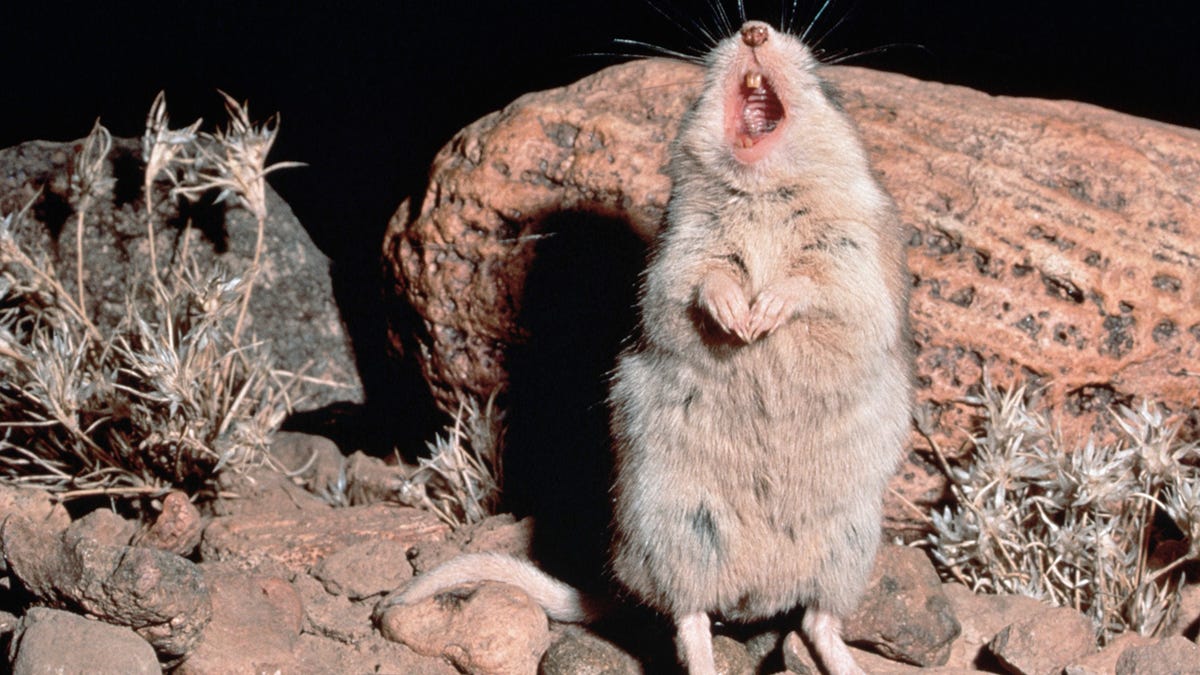Stuttering mice could help stuttering humans
Scientists have invented mice that stutter in the hope of understanding the human speech disorder.
Mice don't stutter like people do, but by tweaking a gene, scientists have created mice that have the mouse equivalent of the human stutter, and they're using it to understand why we do.
"Speech is obviously a unique human capacity, but the patterns of speech are built out of a lot of building blocks that are much simpler," said senior author Tim Holy, an associate professor of neuroscience, in a statement.
"You have to be able to control the timing of your breath and the fine muscles in your tongue and mouth. You have to be able to initiate movement. Those kinds of things may be shared all the way from mice to people."
Stuttering used to be thought purely a response to emotional distress. However, now we know that some people who stutter have a mutation in a gene called Gnptab. To help figure out how this mutation affects suffering, the research team induced a similar mutation in the mouse version of Gnptab. They published their results in the journal Current Biology.
The mice with modified genes produce litters of pups that vocalise in a repetitive, halting pattern similar to humans who stutter, the team found.
"Pups spontaneously vocalise when they are taken from their mom," said first author Terra Barnes. "Mice vocalize when they're in pain, when they meet another mouse, or to attract a mate."
Stuttering usually produces pauses in the vocalisations. The key to working out whether the mouse pups were stuttering was an algorithm that analysed the pauses. This analysis was able to ascertain between normal pauses and stuttering pauses. Those mice with the mutation paused for longer between sounds than mice without the mutation. The stuttering mice repeated the same sounds more often, too, much like humans who stutter.
Apart from the stutter, the mice were otherwise healthy, with cognitive learning ability, memory, balance, coordination skills and physical fitness on a par with the non-stuttering mice. In this respect also, the mice are like humans.
"One of the things we find scientifically interesting about stuttering is that it is so precisely limited to speech," Holy said. "It's a very clean defect in an incredibly complex task."
Using this research, the team is now planning further studies to try and figure out both how the genetic mutation can be treated, and exactly relates to stuttering, which is still unclear. Mostly, Gnptab is involved in the process of breaking down and recycling larger molecules into smaller molecules.
"It's kind of crazy that this gene that's involved in digesting the garbage in your cells is somehow linked to something so specific as stuttering," Holy said.
"It could be that the protein has many functions and this mutation affects only one of them. Or the mutation could very mildly compromise the function of the protein, but there's a set of cells in the brain that is exquisitely sensitive, and if you ever so slightly compromise the function in those cells you get the observable behavioural deficit."


